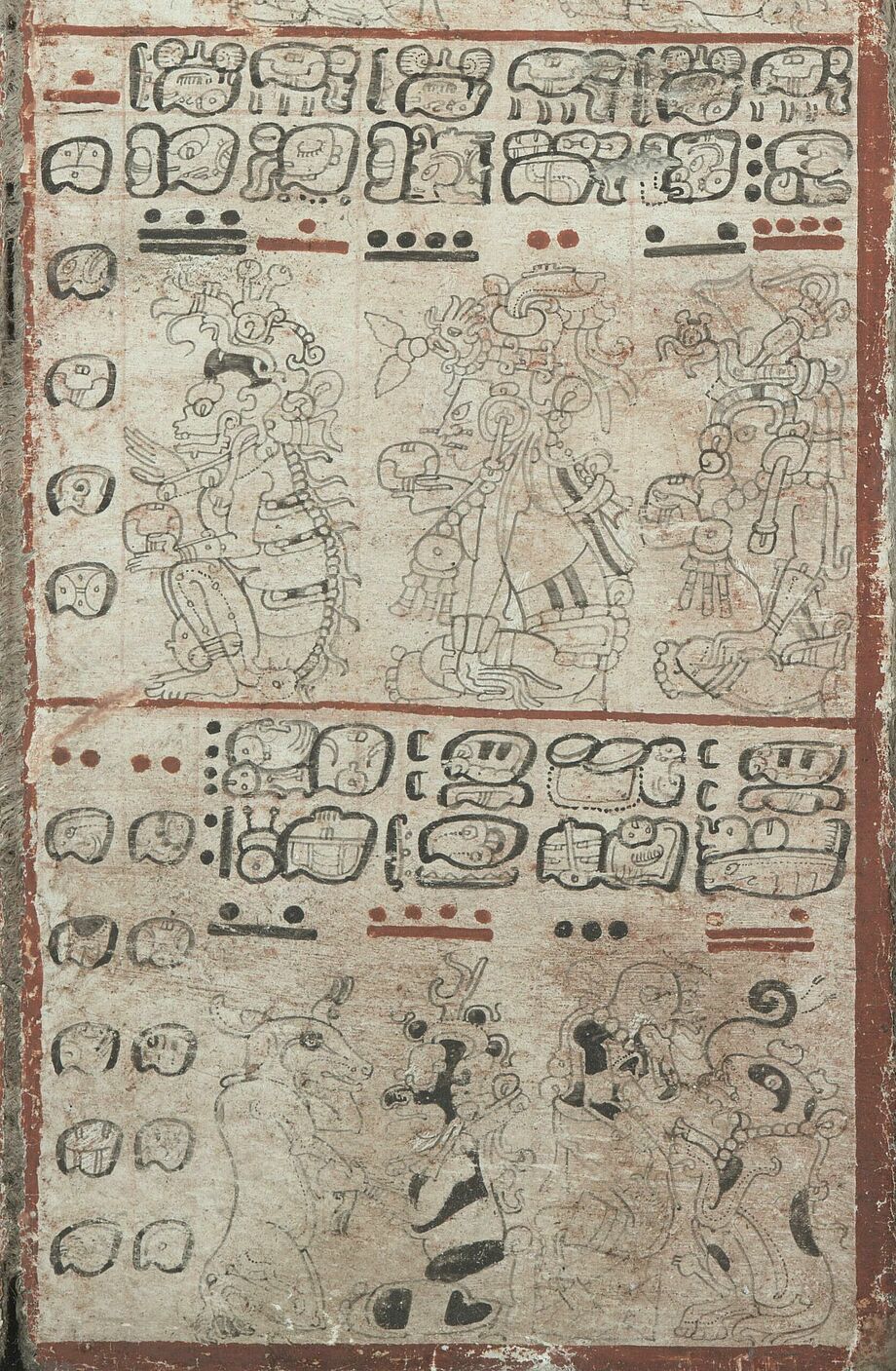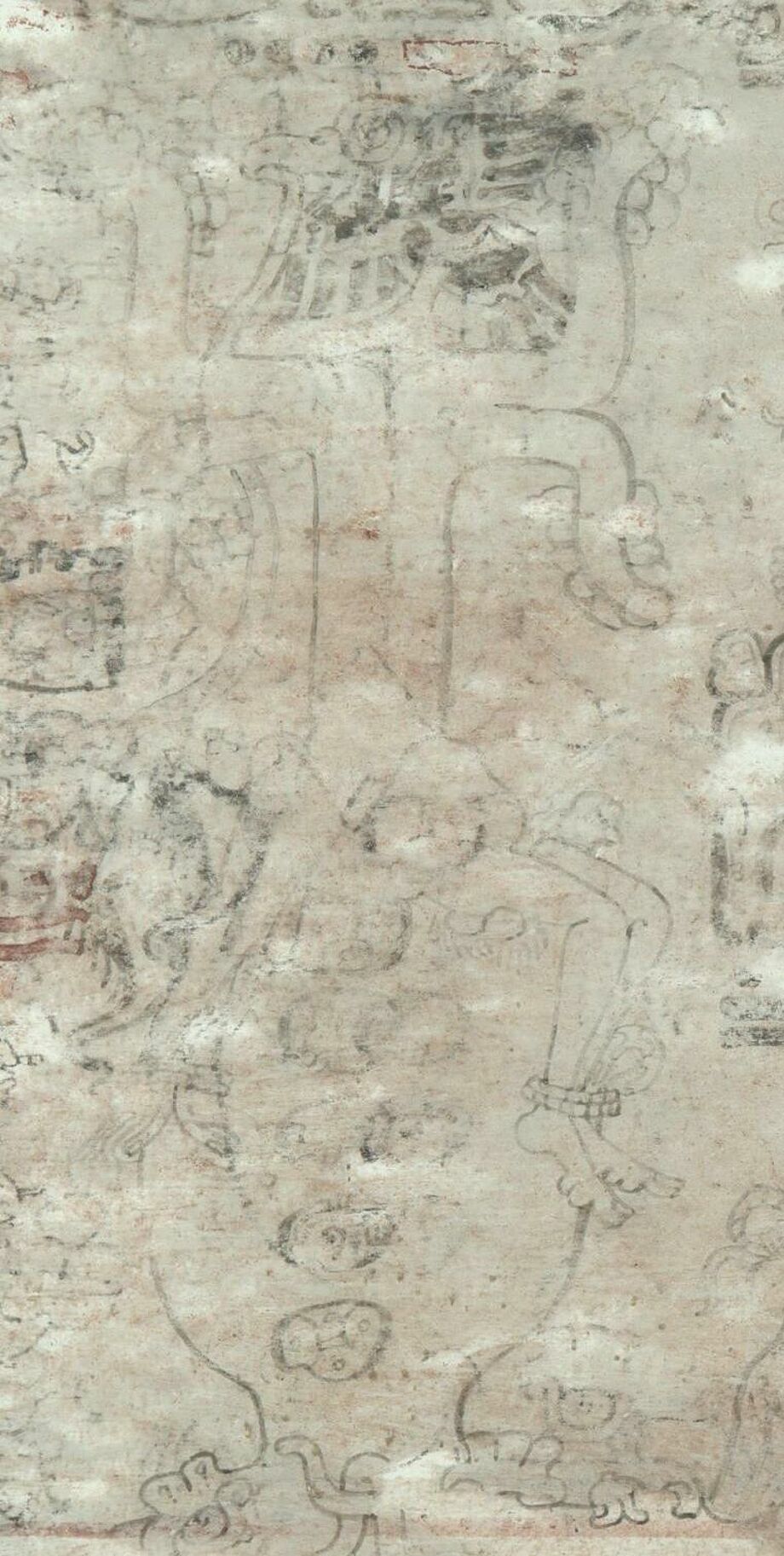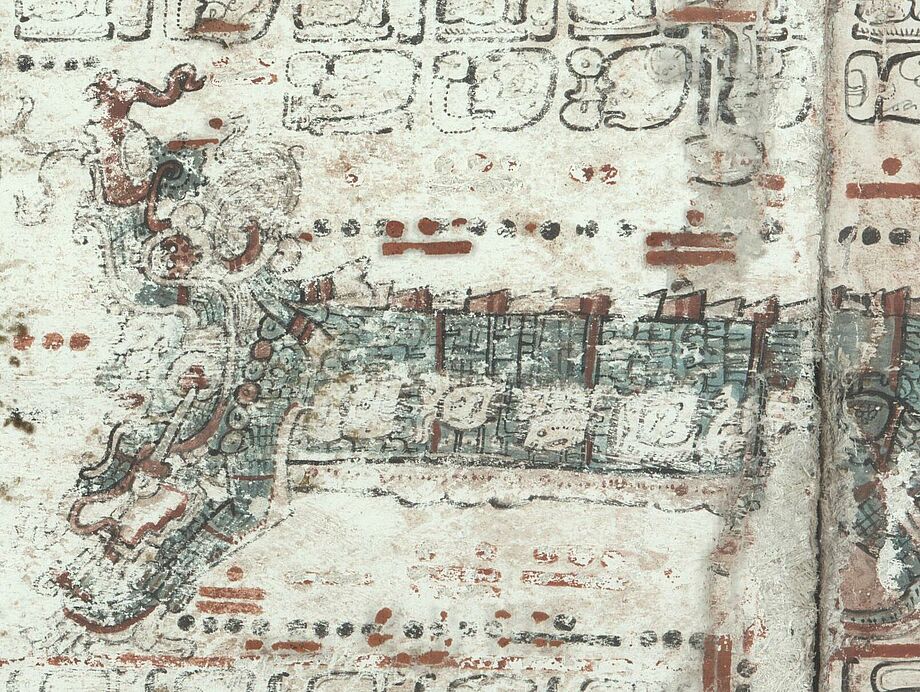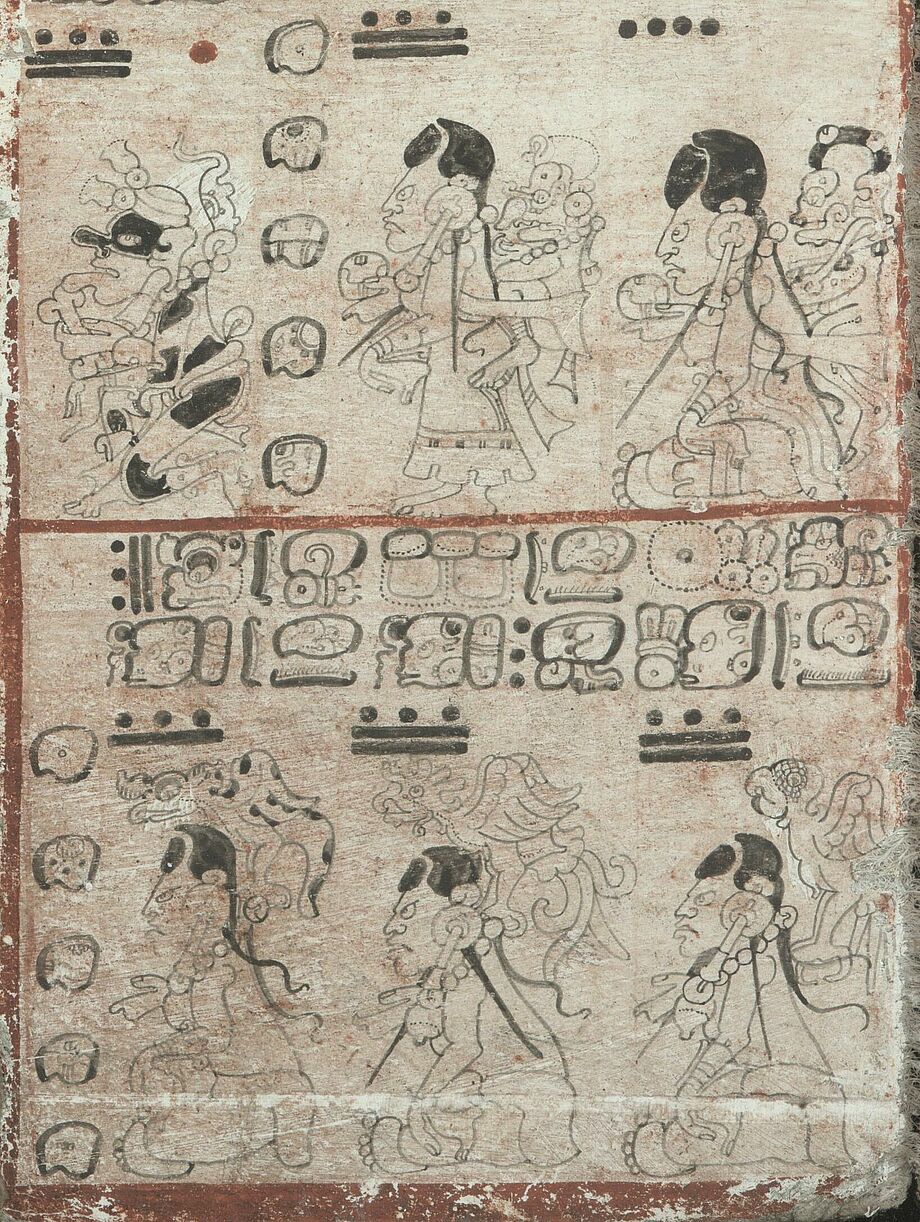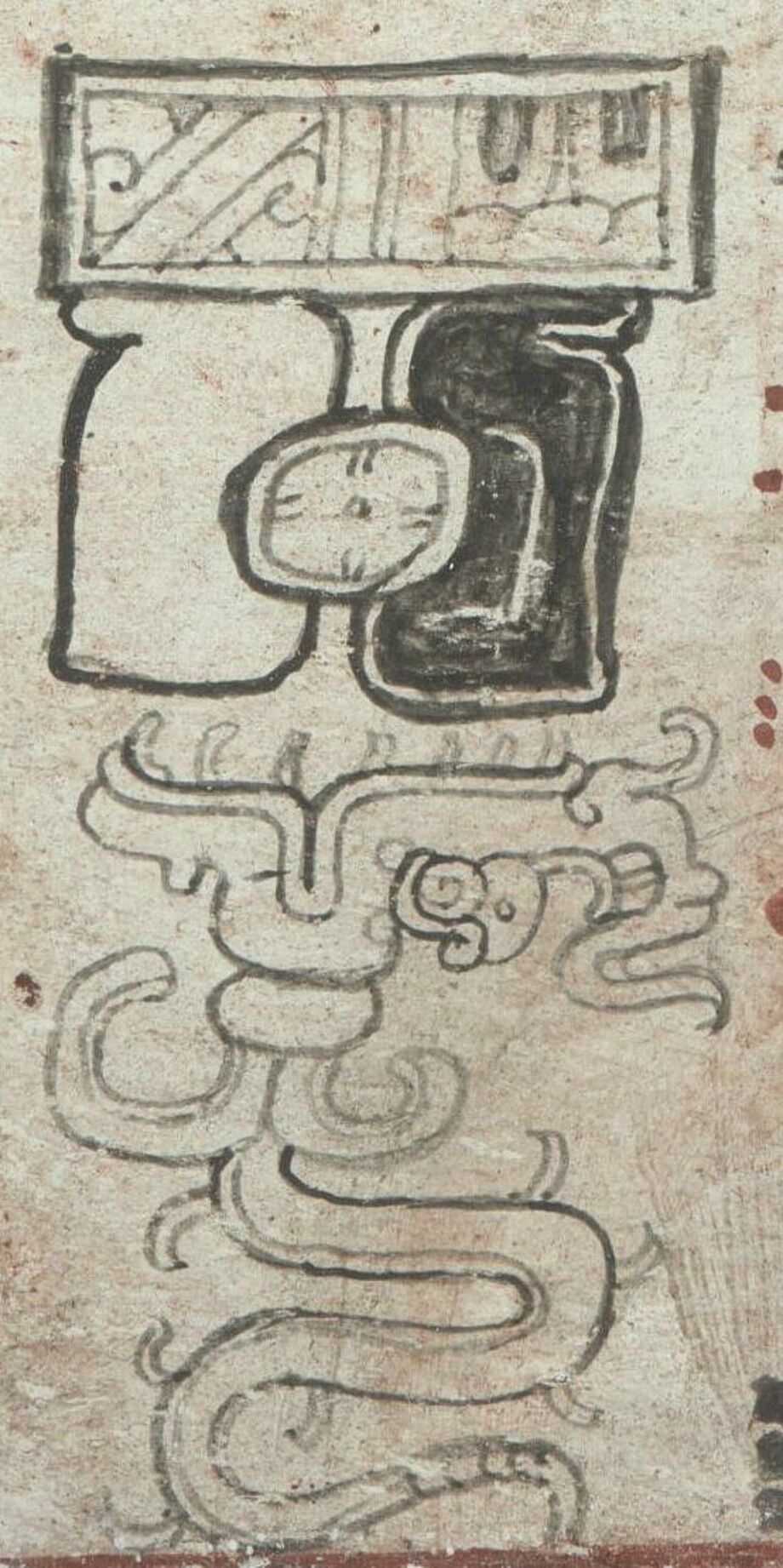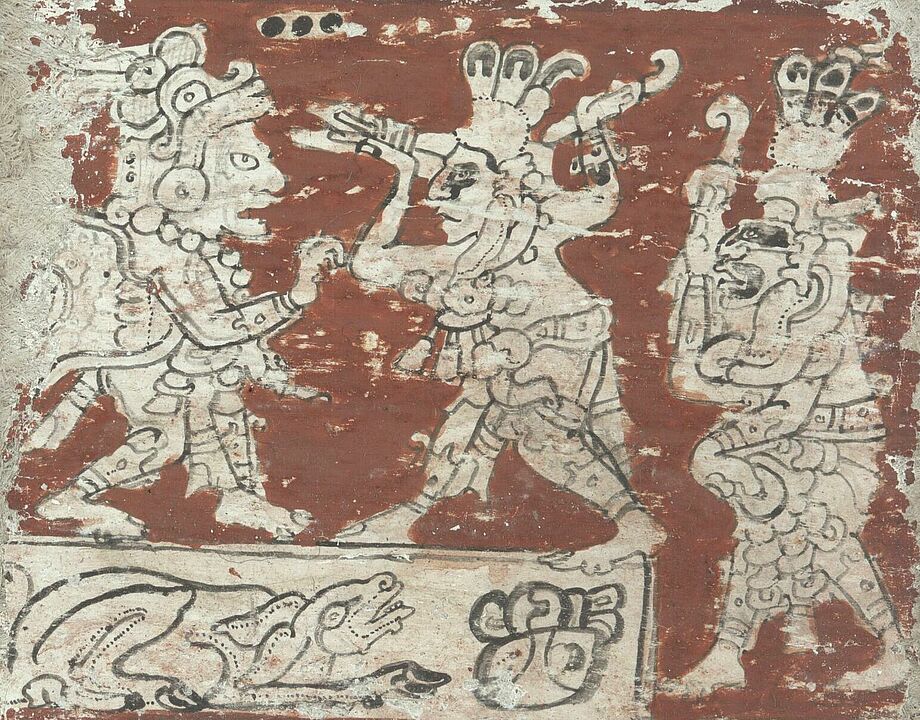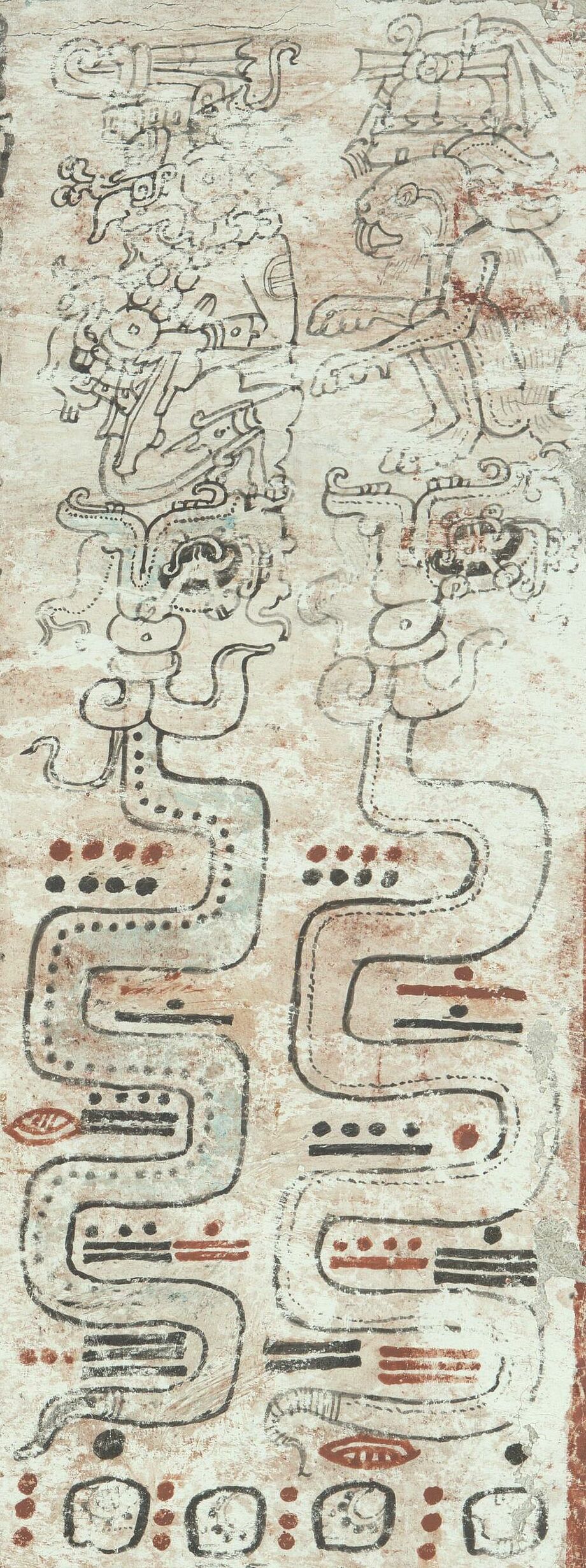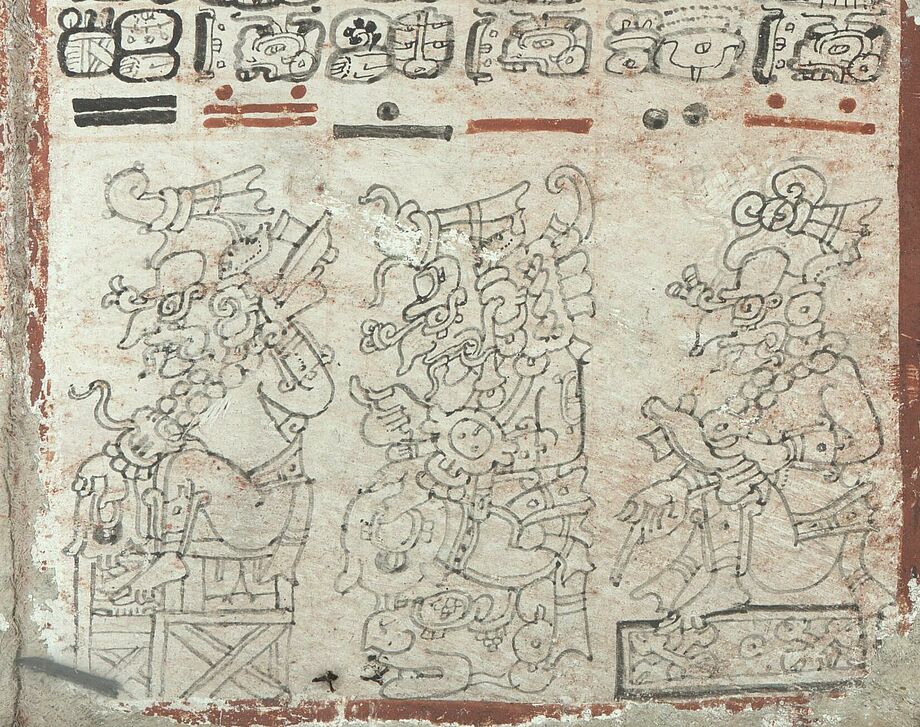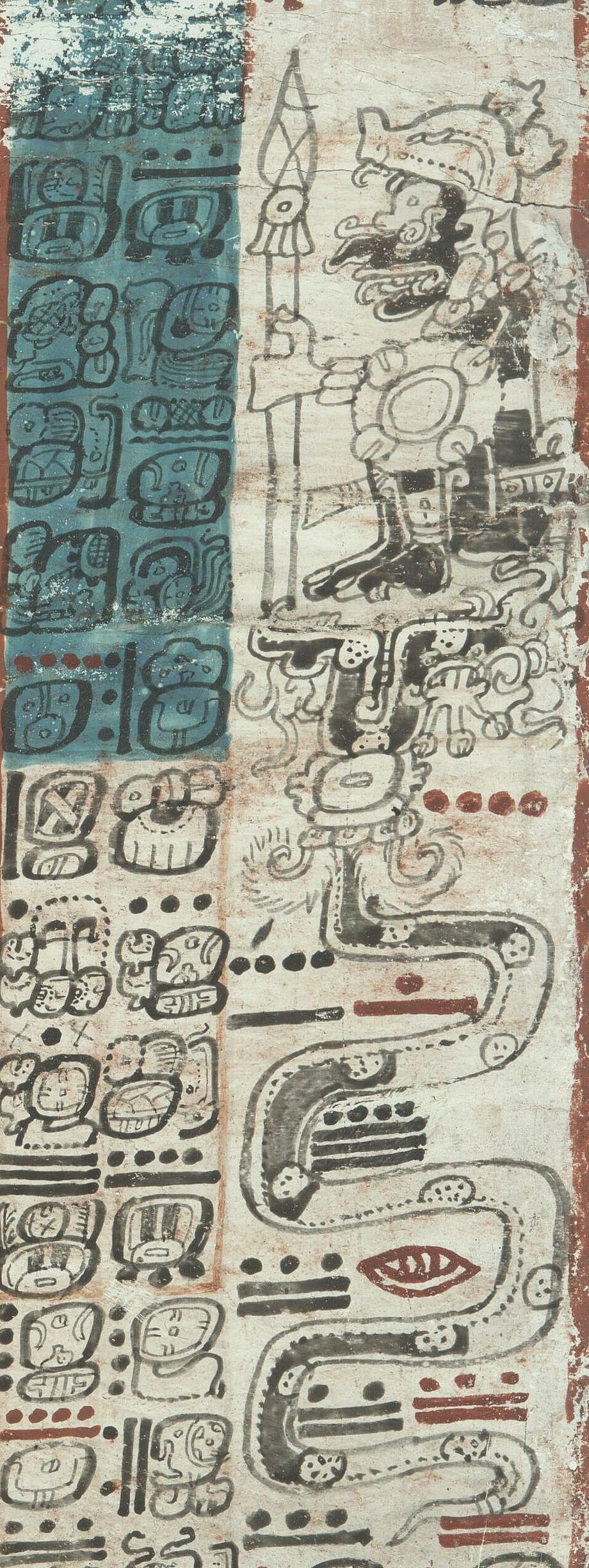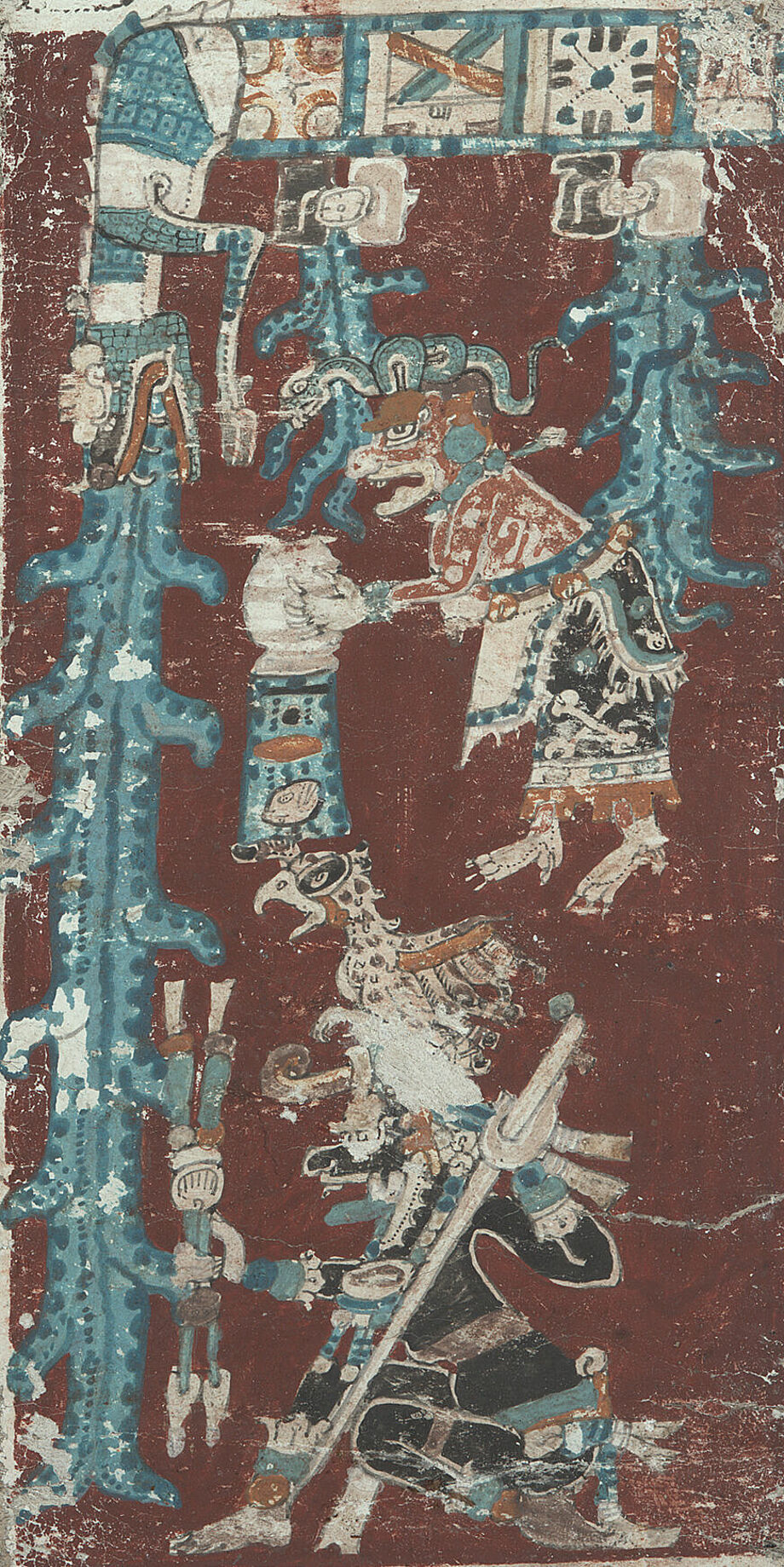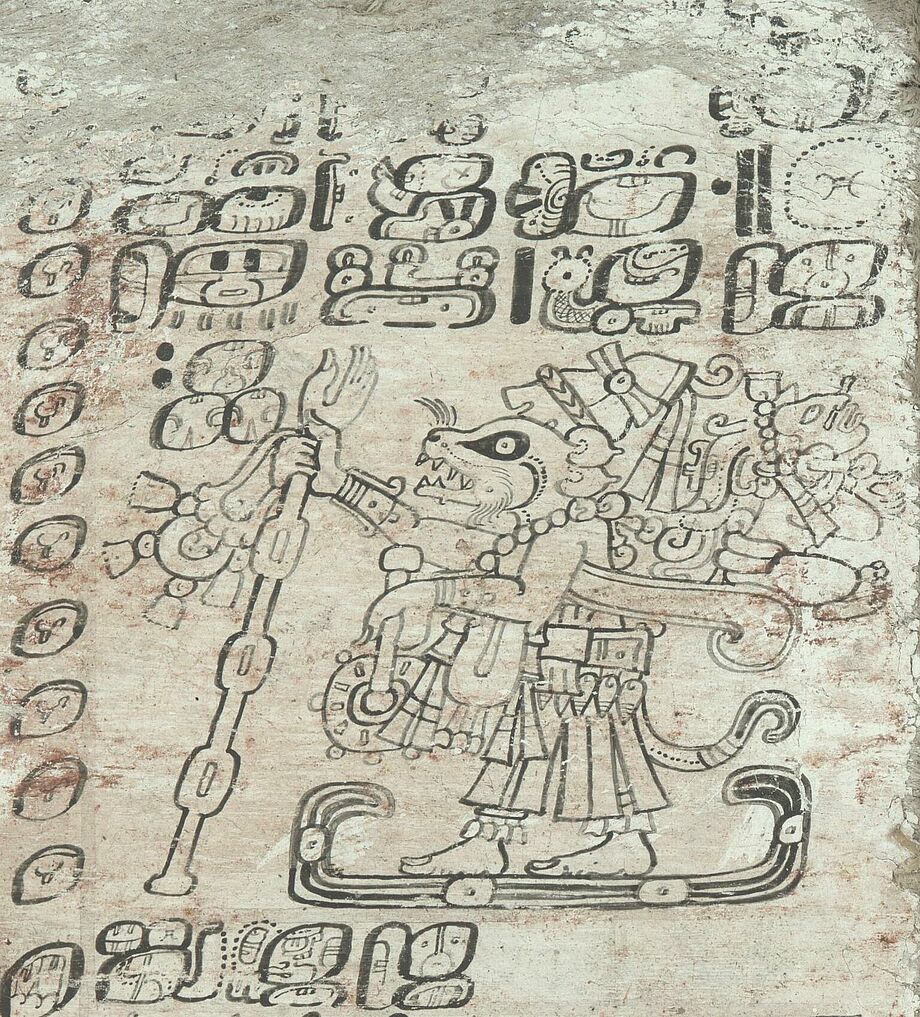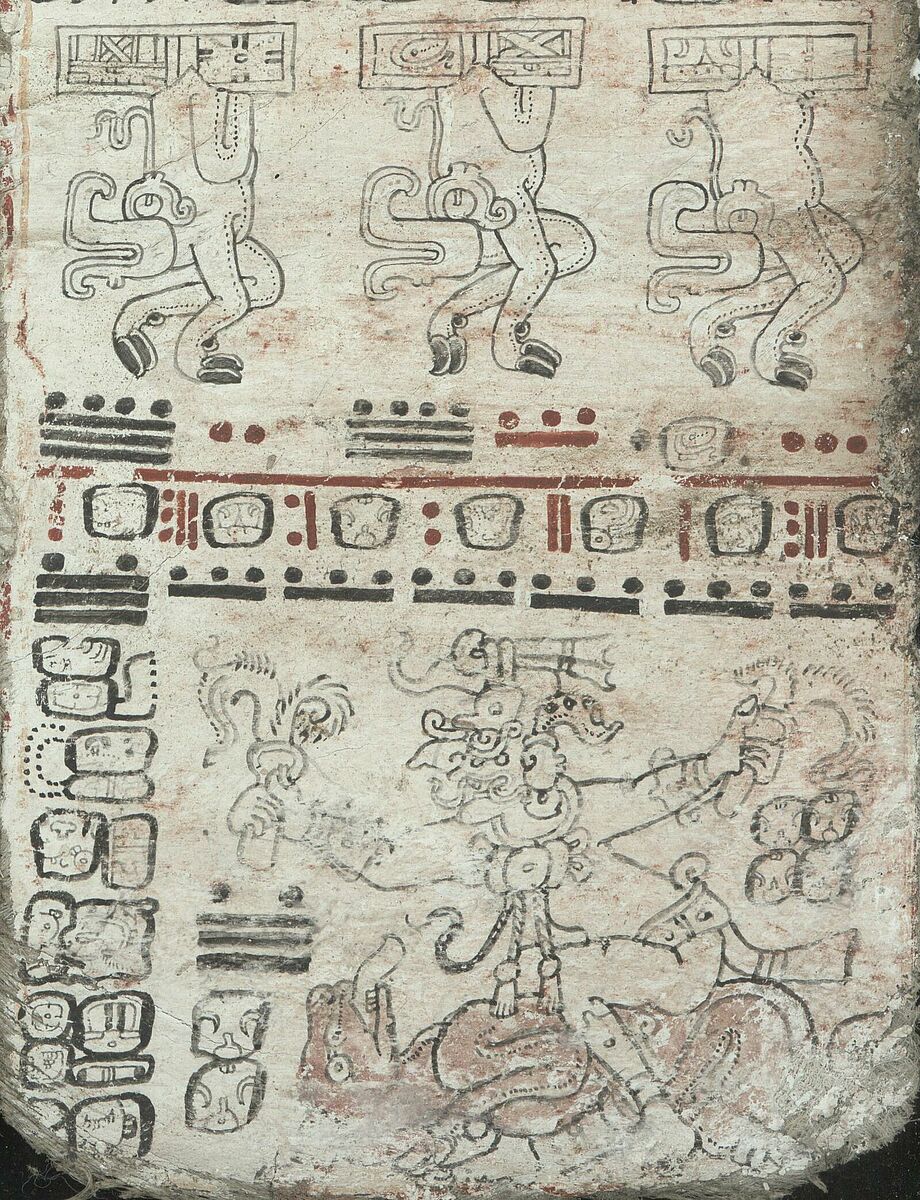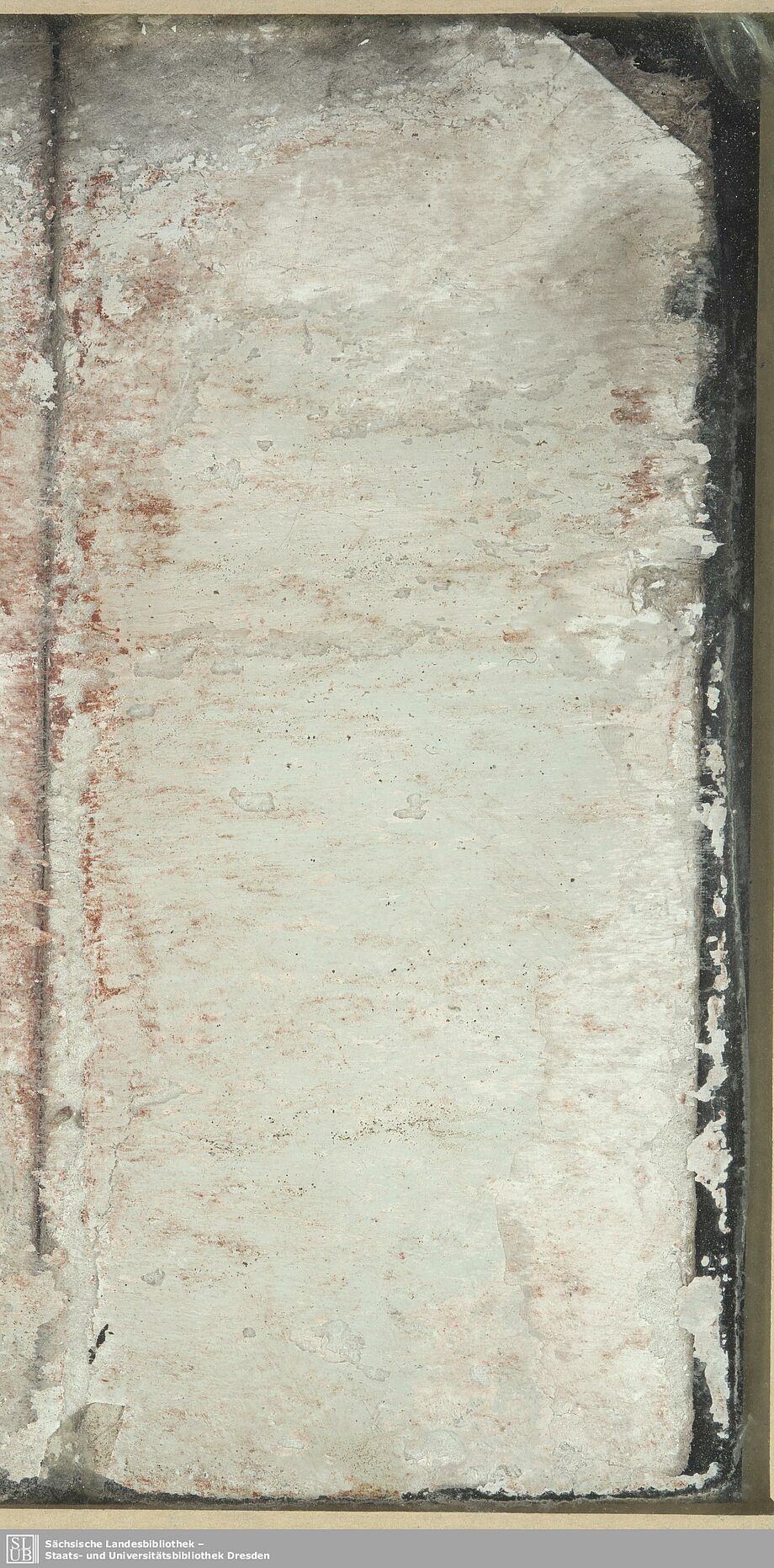Content
The Dresden Maya Codex essentially consists of almanacs (divination calendars) in the form of tables based on a 260-day ritual calendar (Tzolk'in) and astronomical tables with absolute time indications according to the so-called Long Count, which began in 3114 BC Gregorian calendar.
With the help of the almanacs the Mayan priests prophesied the fate for the individual days of the Tzolk'in, which were ruled alternately by 20 deities. Thus it was prophesied whether a day would be favourable or unfavourable for sowing, harvesting, trade, hunting, warfare, marriage, birth, health etc. Depending on this, the gods were called upon, rites were performed and sacrifices were offered. The calculations of planetary orbits and eclipses recorded on the astronomical tables were eventually used for astrological purposes, as in many other cultures.
The codex can be divided into 13 different chapters, often extending over several pages. Most pages are divided into sections by red-brown lines, which in research are designated by lower case letters.
Apart from short hieroglyphic texts and columns of numbers, the manuscript contains about 400 partly coloured drawings, mainly of figures of gods.
Page 1 to 14b Introduction
Page 1-3 (in places hardly recognizable due to water damage): Sacrifices and clothing of the gods. Page 3a shows the sacrifice of the hero Jun Ajaw. He lies tied up and undressed on his back with his body open on a sacrificial stone under a tree, on top of which sits a bird of prey with an eyeball of the victim in its beak. Jun Ajaw and his twin brother Yax Balam, sons of the maize god, sacrificed themselves for the resurrection of their dead father.
Page 4-14b: Invocation of the gods; preparation of prophecies. Pages 4b and 5b show the Crocodile of Heaven, from whose throat the head of the supreme God and Creator Itzamná protrudes. The latter has an eagle's nose and a sunken, toothless mouth (more clearly visible on page 9b right). Other important gods that are depicted several times are the bearded sun god K'in Ajaw with a stylized sunbeam on his eagle nose (for example on page 11b left), the rain god Chaak with a trunk-like nose (for example on page 10b left), the maize god with a corncob on his head (for example on page 9b left) and finally the bony death god Kimi with decomposition spots and bells on his wrists and ankles (for example on page 11a right).
Page 13c-23: Almanacs of the moon goddess
The individual characteristics of the young moon goddess are her large female breast and her hairstyle with a curl hanging down her back. She is portrayed as the goddess of healing and the bringer of sickness and death. On page 16b on the right she carries the latter as a burden on her back, while the diseases in the form of birds sit on her neck below.
Page 24 and 46-50: Venus tables
The pages deal with the 584-day cycle of the planet Venus over a period of 104 years. When the planet appeared as a morning star, the Maya feared misfortune, which is symbolized on the plates of the Dresden manuscript by 3 pictures each: In the upper picture the reigning Venus deity pours a vessel over a war deity with drawn spears in the middle picture and in the lower picture an animal or a god lies as a hit victim.
Page 51- 58: Eclipse tables
The eclipse tables were used to predict solar and lunar eclipses, which were possible at intervals of five or six lunar orbits and which the Maya feared as signs of coming distress and danger. The eclipses are mostly symbolized by the hieroglyphs for day or night between a bright and a dark cloud-like formation under the band of sky. The base dates are 8 November 755 AD and 20 September 1210 AD.
Pages 58-59: Multiplication tables: multiples of 78
Possibly the calculations refer to the 780-day orbit of the planet Mars. The starting dates are 1 April 683 AD and 3 April 2012 AD (!).
Page 60: K'atun prophecy
Probably one of originally several pages of an almanac based on the K'atun cycle (13 periods of 20 solar years each). The battle scene (above) and the subjugation scene (below) indicate a possible war that the Maya feared at the end of a K'atun period.
Page 61-73: Rainy seasons
Page 61-64: Introductory calculations. The Long Count in the coils of snakes, on whose torn open mouths sit the rain god Chaak and a rabbit or a peccary with turban-like headgear, covers mythical periods of over 34,000 years. Sometimes absolute dates from the 3rd, 4th and 10th century A.D. are also given. A cycle of 1820 days, which corresponds to 5 Haab and 7 Tzolkin years, plays a special role.
Pages 65-69b: Whereabouts of the rain god Chaak and the respective offerings required to lure him here.
Pages 69c-73: Rain tables. Introductory a "snake number", which indicates a mythical period of more than 32,000 years. The tables are used for meteorological calculations and contain individual absolute data from the period from the 2nd to the 12th century A.D. A period of 1820 days and the fateful day 4 Eb play a special role. The hieroglyphic texts refer to rain, winds and storms.
Page 74: The Great Flood
The impressive depiction of a flood catastrophe takes up a whole page, which originally follows the rain tables. Below the hieroglyphic series, the sky crocodile can be seen, which is spewing destructive water floods here. Water also flows out of two signs of eclipses. Below them, the old goddess Ix Chel (Chak Chel), characterized by a large chest, claw hands and feet, snake headdress and crossed bones on the skirt, pours water from a vessel together with the number 5.1.0 (=1820) and the hieroglyphic Eb (probably referring to the Tzolkin day 4 Eb, which was predestined for the arrival of a flood). At the bottom a black god crouches with a screaming owl on his head and with two spears in one hand and a sling in the other. This is the ruler of the underworld on the day of creation, which is renewed every 5,125 years according to Mayan beliefs.
Page 25-28: New Year Ceremonies
These pages follow the depiction of the Great Flood (page 74) in the correct order recognized by research today, because the New Year ceremonies are symbolic new creations of the cosmos. Each page contains 3 images: at the top, a priest with a possum mask who carries the patron God of the New Year on his back; below, two sacrificial scenes with various offerings and incense burners for burning incense grains.
Page 29-45: Farmer's almanacs
Almanacs also served as orientation in the cultivation of the fields. They contained statements about weather and harvest and were used in incantations of rain. Depictions of the rain god Chaak as the recipient of food sacrifices dominated. Page 34a shows a ceremony in honour of the maize god, in which musicians with rattle, drum and flute are involved. Pages 42 to 45 relate the journeys of the rain god Chaak and the planet Mars (in the form of a cloven hoofed animal coming down from the sky) during a 780-day period.
Page 28*-28*** and 60*: blank pages
The four blank pages may indicate that the codex has remained unfinished.
Grube, Nikolai: Der Dresdner Maya-Kalender : der vollständige Codex. Mit einer Einf. von Thomas Bürger. - Freiburg im Breisgau ; Basel ; Wien : Herder, 2012
Digital edition of the Codex Dresdensis INAH (Mexiko)
Online catalogue of the exposition "Weltuntergang 2012?" (SLUB, 2012)
